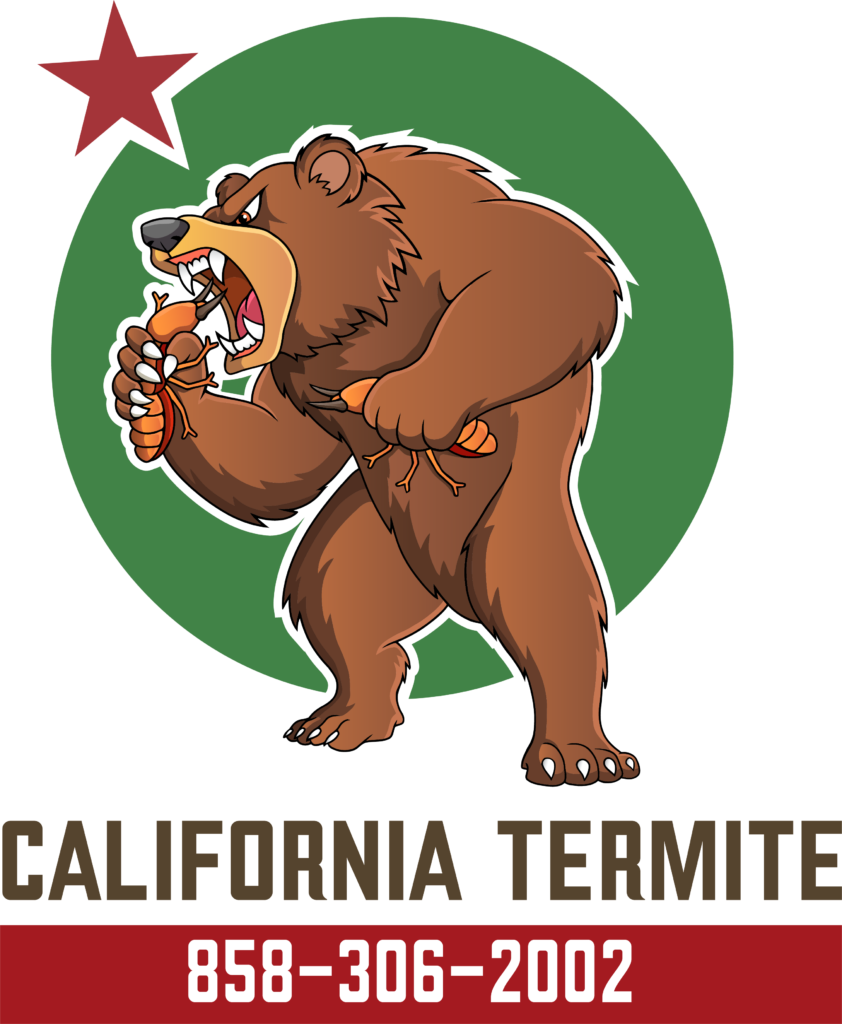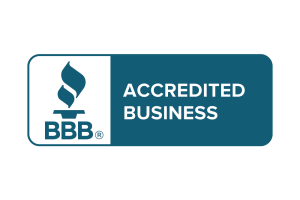Termites
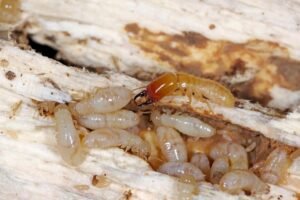 Termite Biology
Termite Biology
Termites undergo an incomplete metamorphosis life cycle with three stages: egg, nymph, and adult.
Nymphs and Their Role Termite nymphs resemble smaller versions of adult termites. In the drywood termite caste system, nymphs serve as the working class, whereas subterranean termites have a distinct worker class. Nymphs or workers perform essential colony tasks, including chewing wood, feeding soldiers, and caring for and grooming the queen. Nymphs molt six times before reaching adulthood. Molting involves shedding the exoskeleton and growing a slightly larger one, with each stage referred to as an instar.
Anatomy Termites have three main body parts: the head, thorax, and abdomen. They also have three pairs of legs.
- Head: Includes the antennae, eyes, and mouthparts.
- Thorax: Contains the wings, legs, and spiracles, which termites use to breathe.
- Abdomen: Features additional spiracles and a pair of cerci. Cerci are sensory organs believed to provide termites with their sense of smell.
Termite antennae are straight and bead-like, used for sensing smells, tastes, and even light. Nymphs and soldiers lack eyes.
Reproductive Development If a termite nymph develops into an alate, or primary reproductive (kings and queens), it will form compound eyes. Compound eyes are composed of numerous facets, providing a mosaic view of the surroundings. During swarming, termites rely on their compound eyes to navigate toward the brightest light source.
In contrast, drywood termite nymphs that do not become reproductives transform into soldiers, characterized by a large head and two mandibles designed for colony defense, primarily against ants. Subterranean termite nymphs may develop into workers, soldiers, primary reproductives, or supplementary reproductives.
Reproductive Castes Primary reproductives swarm to establish new colonies. Supplementary reproductives, which are wingless, play a crucial role in the growth of the existing colony, often surpassing the original queen in reproductive contributions.
Colony Regulation The termite queen regulates colony composition through pheromones, chemical signals that influence the development of immature termites into workers, soldiers, or reproductives. The colony’s needs dictate caste development:
- If more food is required, the queen produces more workers or nymphs to forage.
- If the colony faces external threats, the queen directs the development of more soldiers.
- In stable conditions, the queen promotes the growth of supplementary reproductives to expand the colony further.
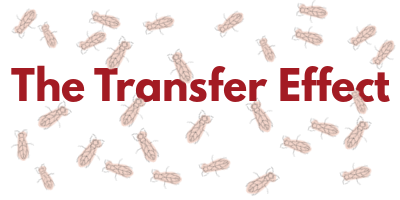 The Transfer Effect
The Transfer Effect
Aside from recycling dead trees, perhaps the only redeeming quality of termites is the Transfer Effect. This phenomenon allows the correct termiticide, when placed near foraging termites, to spread throughout the entire colony.
This happens because of termite colony structure. Termites operate within a caste system consisting of workers (nymphs), soldiers, and reproductives. Workers do more than just chew wood—they also feed and groom the queen and care for the soldiers. Inside the tight quarters of a colony, termites are constantly in contact with one another.
Since modern termiticides are undetectable to termites, they unknowingly ingest or come into contact with the treatment and pass it along as they interact. Thanks to the Transfer Effect, a well-placed treatment doesn’t just kill individual termites—it eliminates the entire colony.
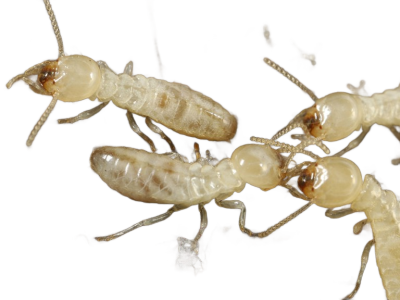 Trophallaxis
Trophallaxis
Termites share food, nutrients, and essential microorganisms through a process called trophallaxis. This exchange is crucial for their survival and colony function.
Termites rely on trophallaxis to transfer protozoans—single-celled organisms that enable them to digest wood—from adults to nymphs. Without these protozoans, termites cannot break down cellulose. Trophallaxis occurs in two ways:
- Stomodeal trophallaxis – food is regurgitated and shared.
- Proctodeal trophallaxis – food and microorganisms are transferred from anus to mouth.
Beyond nutrition, termites use trophallaxis to exchange pheromones for communication and colony recognition. It also plays a key role in caste differentiation, as the transfer of hormones helps determine whether a nymph remains a worker, becomes a soldier, or develops into a reproductive.
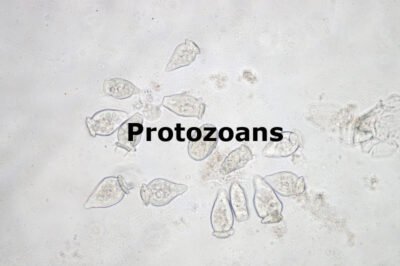 Protozoans
Protozoans
Protozoans are single-celled organisms that live inside a termite’s gut, forming a symbiotic relationship with their host. In exchange for a safe, food-rich environment, protozoans provide termites with the ability to digest wood, breaking down cellulose into nutrients the termites can absorb.
Interestingly, termites aren’t born with the ability to digest wood. To survive, they must ingest protozoans from adult termites shortly after hatching. This is done through a process called trophallaxis.
This dependence makes borate treatments highly effective. Borates act as a stomach poison, killing the protozoans inside a termite’s gut. Without them, termites can no longer digest wood and will die from starvation or constipation.
Fumigation is another powerful control method. While it eliminates all living termites, the eggs left behind will eventually hatch. However, without adults to pass on protozoans, the newly hatched termites won’t be able to survive—ensuring the colony’s complete eradication.
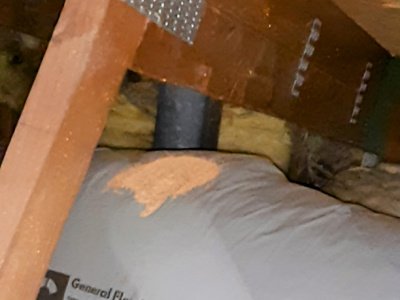 Drywood Termites:
Drywood Termites:
Drywood termites are the most common termites we encounter in San Diego. Unlike subterranean termites, they live and nest directly in wood. As their colonies grow, they create space by pushing out droppings, called frass, (see photo) through tiny openings called “kick-outs.” This behavior often reveals their presence, as people find small piles of droppings beneath infested wood.
Another way drywood termites make themselves known is through swarming. During the fall, on warm days, reproductive termites (called alates) leave their colonies to mate and establish new ones. Swarms typically consist of 20 to over 100 termites flying toward the brightest light source, often near windows, glass doors, or skylights. While homeowners may assume termites originate from these areas, the source is usually elsewhere.
Drywood termite swarmers are dark in color with red heads, broad waists, straight antennae, and two pairs of wings of equal length, which they shed after landing. You might witness a swarm or discover a pile of discarded wings—both indicators of infestation. Although 97% of swarmers die shortly after flight, the remaining 3% perpetuate a billion-dollar industry.
The Lifecycle and Behavior of Drywood Termites
Drywood termites begin life as nymphs, which handle all the colony’s labor, from chewing wood to grooming and feeding the queen and soldiers. Nymphs cannot digest wood initially and must acquire protozoans from adult termites to fully digest it. This reliance on adults is one reason fumigation is so effective—it kills living termites but not their eggs. When eggs hatch, the nymphs starve without adult termites to provide protozoans.
Drywood termite queens can live up to 30 years and produce thousands of offspring. Killing worker termites without eliminating the queen allows her to replenish the workforce. Similarly, secondary reproductives can sustain the colony even if the queen is killed.
Termites also spread by splintering, where a group, including secondary reproductives, breaks off to form a new colony.
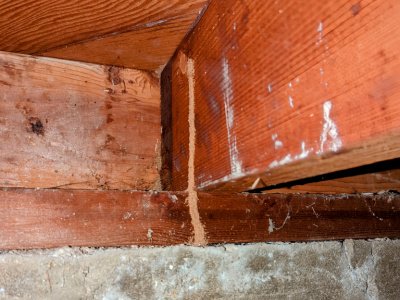 Subterranean termites:
Subterranean termites:
Subterranean termites build their nests underground and require significantly more moisture than drywood termites. Their worker class forages above ground for food, constructing mud tubes (see photo) for safe travel. These tubes are often seen along foundation walls or within crawlspaces. However, subterranean termites can infiltrate a home’s second story without visible evidence, as they navigate through tiny cracks in the foundation and travel inside walls.
When mud tubes are absent, subterranean termites reveal their presence through swarming. Swarms typically occur in spring on warm, wet days. During a swarm, winged termites leave the nest, often through specially constructed swarming tubes. After shedding their wings, they pair up, burrow into moist soil, and mate to establish a new colony. Over time, their offspring will begin foraging for food, targeting dead trees in nature—or, unfortunately, the wooden framing of homes.
Subterranean termite damage differs from that of drywood termites. Drywood termite damage appears clean and smooth, as these termites live within the wood itself. In contrast, subterranean termites, which travel through mud tubes, leave wood filled with dirt and droppings. They also prefer softer wood, avoiding the heartwood and creating damage that appears channeled rather than uniform.
Due to their underground nesting habits, fumigation is ineffective against subterranean termites. Soil treatments with termiticides are the most reliable method. These treatments utilize the “transfer effect,” where worker termites enter the treated soil and spread the termiticide to the rest of the colony. However, these treatments require more time to take effect. In some cases, they may even trigger a swarm, as the termites mistakenly perceive the liquid termiticide as precipitation.
Formosan termites:
Formosan termites are a type of subterranean termite that, while not currently a significant issue in San Diego, have the potential to become one. These termites are highly aggressive, with colonies that can number in the millions—far exceeding the colony sizes of other termite species, which typically range in the thousands.
In regions like the southeastern United States and Hawaii, Formosan termites are a major concern. For instance, in San Diego, some HOAs may require residents to undergo annual termite inspections, while in Hawaii, biannual inspections are often mandated.
Like other subterranean termites, Formosan termites build their primary nests underground. However, they are unique in their ability to form secondary nests above ground, often within structures. This capability makes their infestations particularly challenging to address, frequently requiring both fumigation and soil treatments. Due to the complexity of eradicating Formosan termites, some fumigation companies may decline to provide warranties for their work.
The photos showcase a Formosan termite infestation discovered in a San Diego residence.
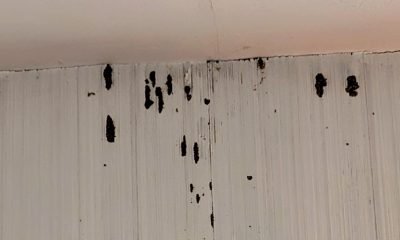
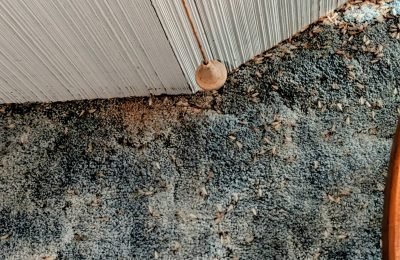
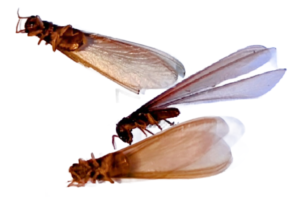
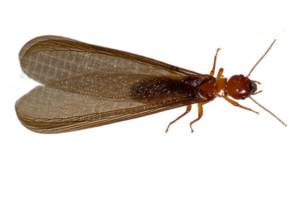 Dampwood Termites
Dampwood Termites
are the largest termite species in California and are also known as rotten wood termites. They thrive in wood with high moisture content and are typically found in old, rotting tree stumps, logs, and dead trees. These termites prefer wood that is in contact with the ground or has access to a continuous water source, making them common in central and northern coastal areas of the state. Dampwood termites play a role in spreading wood-decaying fungi by carrying fungal spores in their intestines.
Swarming and Behavior
Dampwood termites primarily swarm in the fall. The reproductive swarmers are about an inch long, are strong fliers, and are attracted to bright light. Unlike some other termite species, Dampwood termites lack a dedicated worker caste. Instead, nymphs perform all labor tasks. These nymphs measure about ⅝ of an inch, are cream-colored, and have distinctive spotted abdomens. Soldiers, approximately ¾ of an inch long, have a flattened, yellowish-brown head and dark mandibles with an uneven number of teeth.
Signs of Infestation
Wood damaged by Dampwood termites has a velvety appearance. Their droppings are scattered throughout their tunnels, but unlike subterranean termites, they do not construct mud tubes.
Treatment and Prevention
Effective treatment for Dampwood termites involves addressing the source of moisture that
Termite Damage:
In San Diego, two primary types of termites pose a threat to homes: Drywood and Subterranean termites. Properly identifying the species is crucial because the treatment methods differ significantly.
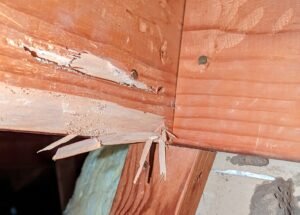 Drywood Termites
Drywood Termites
Drywood termites reside directly in the wood they infest. As their colonies expand, they create additional space by pushing their droppings out through small holes called kick-outs. These termites consume both the heartwood and sapwood, often leaving entire sections of wood hollowed out, with only a thin layer of paint remaining as evidence.
A key characteristic of drywood termite damage is the clean, smooth appearance of the channels within the wood.
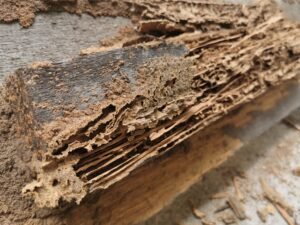 Subterranean Termites
Subterranean Termites
Unlike drywood termites, subterranean termites live underground and access wood structures by building mud tubes. These termites do not reside in the wood itself, so they don’t need to clear out space for their colonies.
Subterranean termites primarily target softer wood, avoiding the grain. This results in a channeled appearance marked by dirt and droppings mixed into the wood.
.
Termite Swarming
In San Diego, we commonly deal with two types of 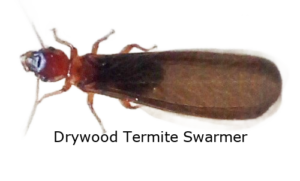 termites: drywood and subterranean termites. Identifying the species infesting your home is crucial because the treatments for these pests are entirely different.
termites: drywood and subterranean termites. Identifying the species infesting your home is crucial because the treatments for these pests are entirely different.
- Drywood Termites: These termites live directly in the wood. Treatment can involve localized methods for smaller infestations, but in severe cases, fumigation may be necessary.
- Subterranean Termites: These termites reside underground. Fumigation is ineffective for subterranean termites since it cannot reach their nests. Treating the soil is what is required.
Both termite species exhibit swarming behavior. Swarming occurs when winged reproductive termites leave their nests to establish new colonies.
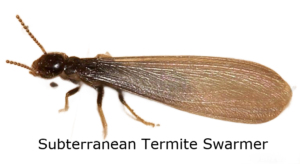 Subterranean termites typically swarm in the spring.
Subterranean termites typically swarm in the spring.- Drywood termites generally swarm in the fall.
Although they look similar, there are distinct differences:
- Both have dark bodies, broad waists (unlike the pinched waists of winged ants), straight antennae, and two pairs of equal-sized wings.
- Drywood termites have reddish-colored heads.
- Subterranean termites have darker heads.
Accurately identifying the species and timing of activity helps determine the most effective treatment plan for protecting your home.
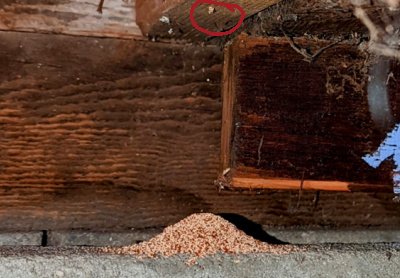 Kickouts and Termite Droppings
Kickouts and Termite Droppings
A kickout is a small hole created by drywood termites to expel their droppings. Since drywood termites live inside the wood, they must clear space as their colony expands. To do this, they tunnel through the wood and push their droppings out, resulting in a small pile of frass (termite droppings)—a key indicator of an infestation.
The shape of the droppings pile depends on the distance between the kickout hole and where the frass lands. A shorter distance results in a more concentrated pile, while a greater distance causes the droppings to spread out.
When a termite inspector finds termite droppings, they look directly above the pile for a droppings-encrusted hole, known as a kickout. Locating the kickout pinpoints the colony’s location, enabling precise treatment of the affected wood.
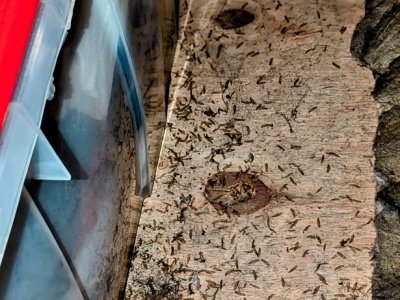 Termite Wings
Termite Wings
When termites swarm, they shed their wings after landing to facilitate crawling and mating. Their wings are fragile and designed to come off easily. Once wingless, termites pair up and look for a place to start a new colony—drywood termites enter cracks in wood, while subterranean termites head into soil.
If a termite inspector finds a pile of discarded wings, it means a swarm occurred, and there could be active termites nearby. The level of concern depends on where the wings are found. For example, wings scattered near a sliding glass door or on carpet aren’t usually a major issue, since most of those swarmers die quickly. But if wings are discovered in an attic, it’s much more serious. Attics have plenty of exposed wood and hidden spaces where termites can establish colonies, and since homeowners rarely see or control swarmers in these areas, the risk of infestation is far higher.
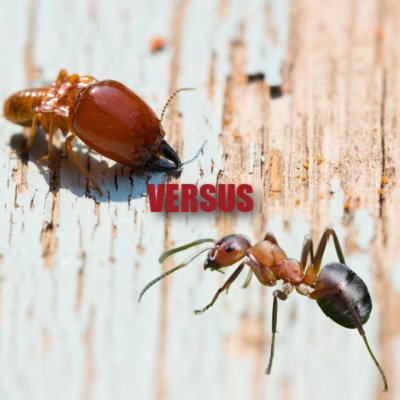 Termites vs. Ants
Termites vs. Ants
Ants and termites are natural enemies, and their rivalry is so fierce that termites have evolved an entire soldier caste just to defend against ant attacks. These termite soldiers start out like all other termites, but once designated as defenders, they develop oversized heads and powerful mandibles. While their new anatomy makes them effective in combat, it also leaves them unable to feed themselves, relying on worker termites for nourishment.
When ants discover a termite colony, they see it as a feast. They quickly signal reinforcements, launching a full-scale invasion. The termite soldiers are deployed to fight, while worker termites seal off their exit hole, leaving the soldiers to battle to the death. Due to their sheer numbers and agility, ants often emerge victorious.
After a termite fumigation, it’s common to see trails of ants leading to areas of previous infestation, scavenging the dead termites. This is another reason why spot treatments are sometimes preferable—many termiticides are also effective against ants, helping control both pests at once.

